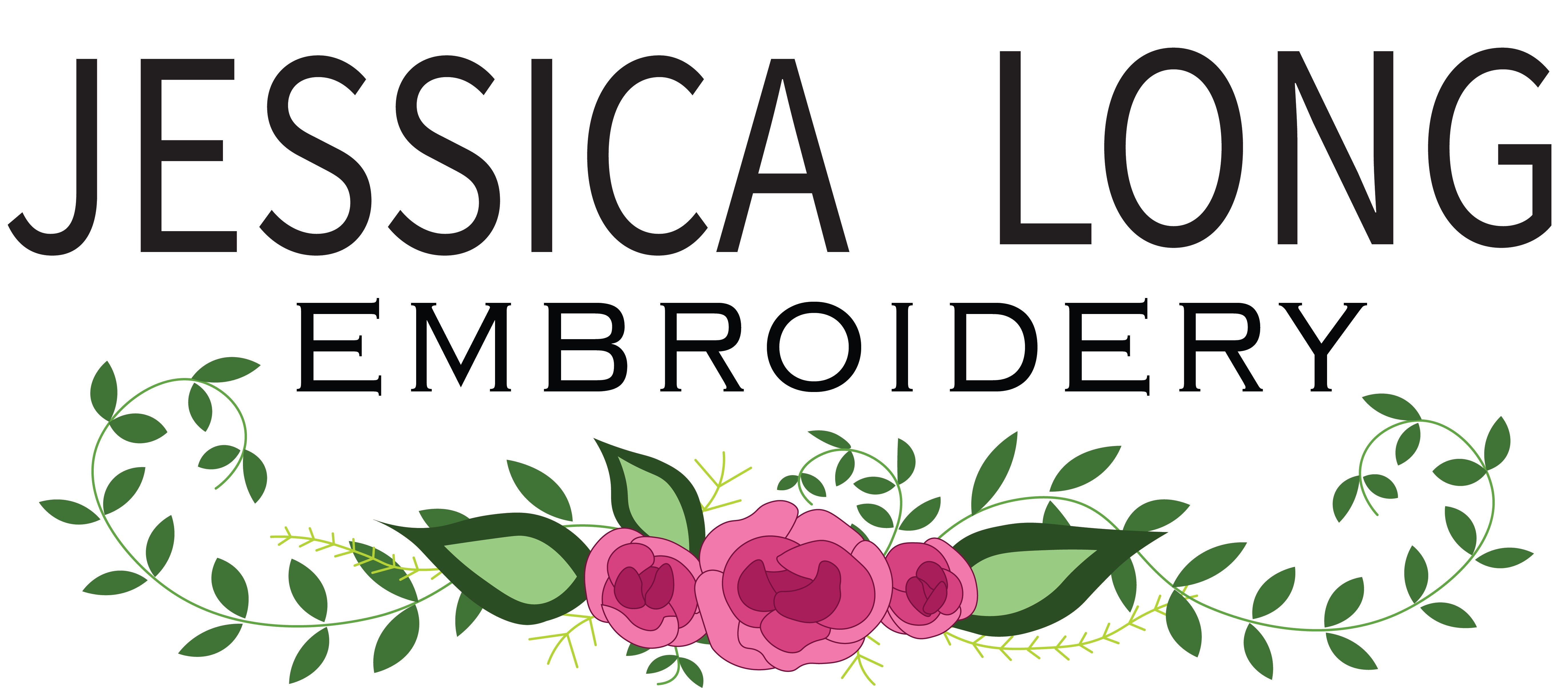You've just completed a lovely piece of embroidered art but have decided that it is missing something - text! It can be so fun to add a favorite quote or name to your work, but what stitch should you use?
Below I've included a look at my favorite hand embroidery stitches for lettering. Scroll down for information on each stitch, plus photos and a full video tutorial (almost an hour long!) with demos for each stitch and variations. I used a full strand of 6-ply cotton embroidery floss for all of the examples included here in photo and video, but you can substitute fewer strands to get a thinner line.
1.  Back stitch is my favorite stitch to use for lettering because it is simple and relatively quick. By shortening your stitch length you can handle curvy letters very well.
Back stitch is my favorite stitch to use for lettering because it is simple and relatively quick. By shortening your stitch length you can handle curvy letters very well.
Change the number of threads (1 through 6 ply) to change the thickness of your line. You may want to use fewer strands when stitching smaller font, like how you would use a fine tip pen versus a fat thick Sharpie marker.
 You can also whip your back stitch to give a more solid, smooth line. For fun you can whip using a different color to get fun striped lettering.
You can also whip your back stitch to give a more solid, smooth line. For fun you can whip using a different color to get fun striped lettering.
 Also, you can double up your back stitch (2 parallel lines) or even use it to fill when stitching thick fonts.
Also, you can double up your back stitch (2 parallel lines) or even use it to fill when stitching thick fonts.
2.  Stem stitch is a little more tricky for lettering, especially when there are directional changes in the curves of letters. Check out my video for more information on adjusting your stem stitch with directional changes. Shortening the stitch length will always help!
Stem stitch is a little more tricky for lettering, especially when there are directional changes in the curves of letters. Check out my video for more information on adjusting your stem stitch with directional changes. Shortening the stitch length will always help!
3.  Split stitch is another easy option for lettering and it creates a fun texture. It will take a little longer than back stitch because of how each stitch overlaps the previous stitch.
Split stitch is another easy option for lettering and it creates a fun texture. It will take a little longer than back stitch because of how each stitch overlaps the previous stitch.
Again, you can play with ply to change the thickness of your line, but the fewer strands you use the harder it will be to split the previous stitch. This stitch can also be whipped to add dimension or additional color.
4.  Chain stitch creates lovely lettering but it can be time consuming. The key is keeping your stitch length short and consistent. Chain stitch creates a thick, textured line, and really does well with loopy curves.
Chain stitch creates lovely lettering but it can be time consuming. The key is keeping your stitch length short and consistent. Chain stitch creates a thick, textured line, and really does well with loopy curves.
5.  Couching is such an underrated stitch! For this example I couched variegated floss with a solid green colored thread. Mix it up with different colors and numbers of strands.
Couching is such an underrated stitch! For this example I couched variegated floss with a solid green colored thread. Mix it up with different colors and numbers of strands.
6.  Satin stitch creates gorgeous, thick letters given enough time and patience. Clearly I didn't have either as I only stitched the "s" in my sample hoop. Here I initially outlined the shape of the letter with back stitch (using a full 6-ply) before starting my satin stitch. I encourage you to check out my blog on satin stitch for more information about how many strands of floss you should use and on whether or not you should pad your satin stitch.
Satin stitch creates gorgeous, thick letters given enough time and patience. Clearly I didn't have either as I only stitched the "s" in my sample hoop. Here I initially outlined the shape of the letter with back stitch (using a full 6-ply) before starting my satin stitch. I encourage you to check out my blog on satin stitch for more information about how many strands of floss you should use and on whether or not you should pad your satin stitch.
That's it! So, which stitch are you going to use for your next project?
Looking for a pretty floral frame to stitch up around your text? Try one of these PDFs:

Ever After, an intermediate design with thread painting and a soft, wedding color palette.
Coming up Roses or Satin Rose Wreath, beginner designs featuring satin stitched roses.
And two more beginner designs: Woven Rose Border and Nevertheless, She Persisted.
